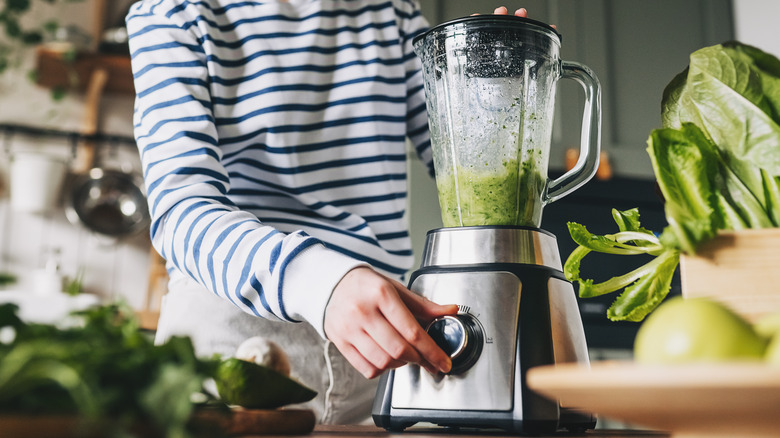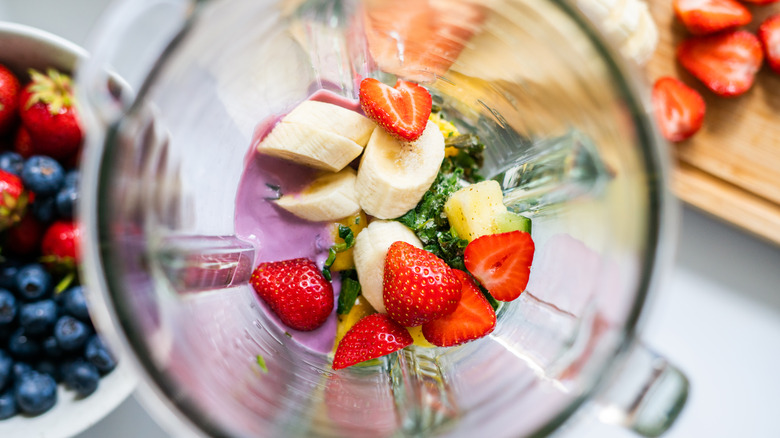The Easiest Way To Silence Your Noisy Blender
Blenders can do a lot of things (they can actually even clean themselves), but being quiet isn't among their many fortes. They scream, screech, and wake up the entire neighborhood — all while you're only trying to make yourself a glass of smoothie peacefully early in the morning. It's like someone's dragging their fingernails down a chalkboard just to grate you or incessantly drilling a hole in your backyard. It just isn't the most pleasant experience for your ears.
Luckily, there is a solution for noisy blenders — and no, it doesn't involve throwing it altogether and upgrading to a costly new appliance. All you need to do is place a thick dish towel under the blender; the same towel that's also a culinary school trick to keep cutting boards from slipping. Even a trivet or a rubber or silicone mat will do so as long as it does not cover the vents located near the bottom.
Blenders have powerful motors that cause them to vibrate furiously when they are turned on. That high-pitched screeching is often the result of the blender vibrating, likely against a hard surface like the countertop or even a wall. Towels and mats essentially work as barriers between the surface of the counter and the trembling blender and absorb all the sound that the appliance makes. That's all it really takes to silence a shrieking blender most times.
There are several reasons why your blender may be screeching
Using a towel is the easiest way to hush up a screeching blender, but it only works when the appliance's vibrations against a hard surface are causing the noise. Sometimes, the sound could be due to another problem, in which case throwing in a towel won't fix things.
Perhaps some part inside or outside the blender has loosened and is now rattling about and causing a racket. Check the appliance for any stray parts, and make sure that those rubber cushion pads attached to the base are secured properly — often, these can come off and cause the blender to vibrate loudly. It could also be dull blades that are to blame, so always keep them sharp. The speeds of these blades can contribute to the high-pitched shrilling, too, and you'll find that running the blender in short bursts rather than using it continuously can reduce the noise significantly.
It might not always be your blender that's to blame, though. Some food items are just noisier to blend than others, and there isn't a lot you can do about it. Take rock-hard ice cubes for a frozen drink or a batch of nuts, for instance — these ingredients are simply more clamorous to blitz. Make sure that there is no food buildup inside the blender either (especially under the blades). Sometimes a proper cleaning is all that a noisy blender needs to quieten down.


